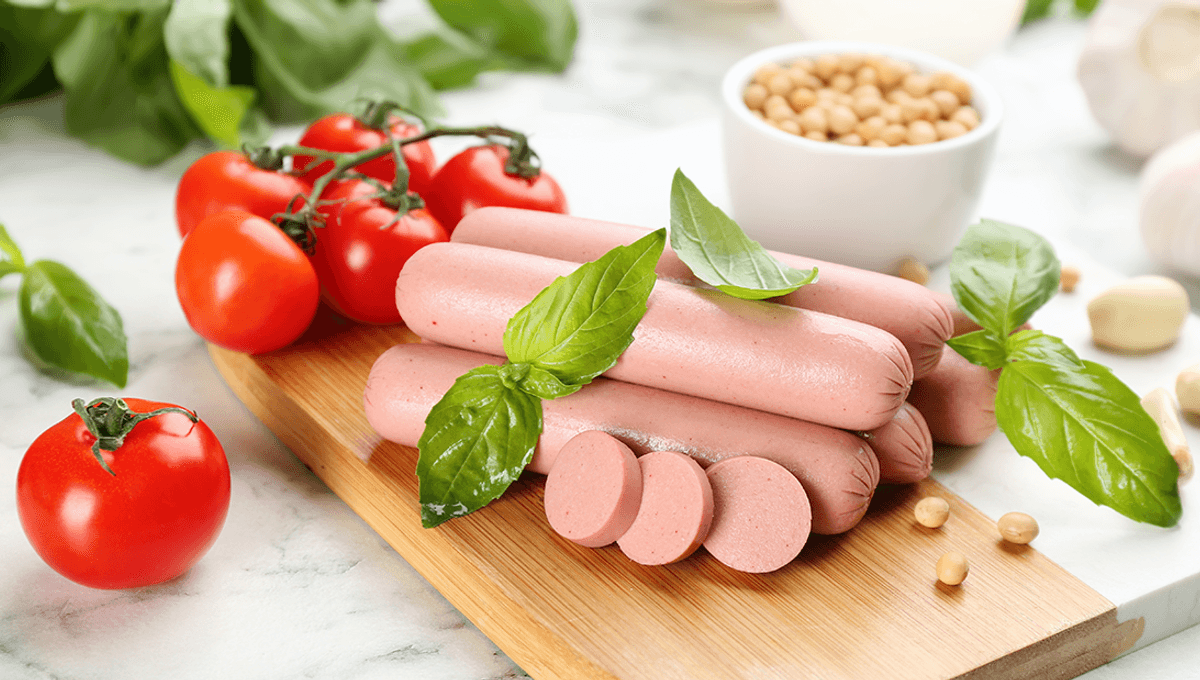
It’s come to our attention lately that people aren’t really aware of how certain foods (like crab sticks) are made. This is perfectly understandable, given that for most modern humans when you fancy some parmesan you merely have to have an awkward interaction with a waiter rather than head out to kill a baby cow yourself.
But it’s still fun to learn, and this week people have discovered how vegan and vegetarian sausages are made. The protein base of the sausages varies from brand to brand, including soy proteins, pea proteins, and mushrooms.
Quorn, one of the better-known vegetarian and vegan brands, grows the microfungus Fusarium venenatum to be used in their various products. As with a lot of foods, it doesn’t look great before it is shaped.
What appears to be grossing people out is not the protein aspect – are sausages made of ground-up animal any better? – but the vegetarian sausage casing. In traditional sausages, the “skin” of the sausage is made using pig intestines. Nowadays, casings are made of collagen, cellulose, and edible plastic.
In the UK Channel 4 show Food Unwrapped, viewers were shown how Heck make their sausage casings from an alginate gel made from seaweed, before dunking it under a calcium chloride solution on the production line.
While the stiffening may not look pretty, you’d have to be a committed meat eater to suggest it has a worse back story than regular meat sausages.
People have expressed disgust at the sausage casing online, with complaints focusing on how vegans are putting dangerous chemicals into their bodies. For the avoidance of doubt, however, calcium chloride is a salt. It is made into a solution, used on the seaweed-based gel, by adding that dangerous substance known as water.
Source Link: People Are Just Now Learning How Vegetarian Sausages Are Made